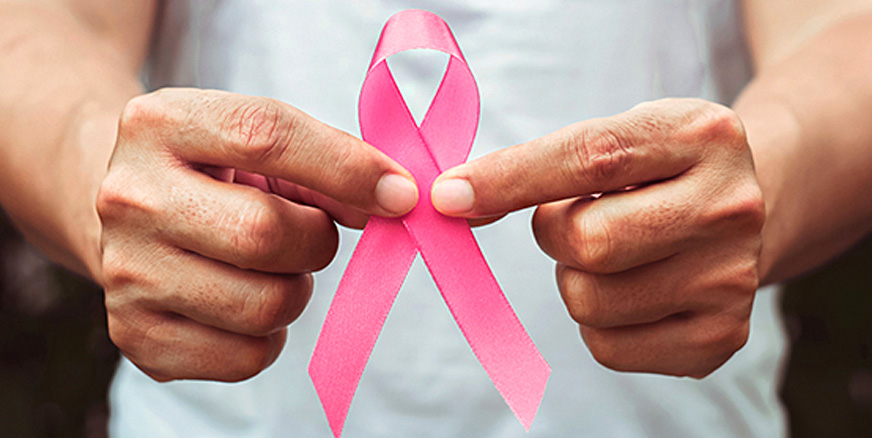Breast cancer is a disease in which cells in the breast grow out of control. There are different kinds of breast cancer. The kind of breast cancer depends on which cells in the breast turn into cancer.
Symptoms
Signs and symptoms of breast cancer may include:
- A breast lump or thickening that feels different from the surrounding tissue.
- Change in the size, shape or appearance of a breast.
- Changes to the skin over the breast, such as dimpling.
- A newly inverted nipple.
- Peeling, scaling, crusting or flaking of the pigmented area of skin surrounding the nipple (areola) or breast skin.
- Redness or pitting of the skin over your breast, like the skin of an orange.
Kinds of Breast Cancer
The most common kinds of breast cancer are
- Invasive ductal carcinoma. The cancer cells begin in the ducts and then grow outside the ducts into other parts of the breast tissue. Invasive cancer cells can also spread, or metastasize, to other parts of the body.
- Invasive lobular carcinoma. Cancer cells begin in the lobules and then spread from the lobules to the breast tissues that are close by. These invasive cancer cells can also spread to other parts of the body.
What causes breast cancer?
Breast cancer develops when abnormal cells in your breast divide and multiply. But experts don’t know exactly what causes this process to begin in the first place. However, research indicates that are several risk factors that may increase your chances of developing breast cancer. These include:
- Age : Being 55 or older increases your risk for breast cancer.
- Sex. Women are much more likely to develop breast cancer than men.
- Family history and genetics.
- Smoking. Tobacco use has been linked to many different types of cancer, including breast cancer.
- Alcohol use. Research indicates that drinking alcohol can increase your risk for certain types of breast cancer.
- Obesity. Having obesity can increase your risk of breast cancer and breast cancer recurrence.
- Radiation exposure. If you’ve had prior radiation therapy — especially to your head, neck or chest — you’re more likely to develop breast cancer.
- Hormone replacement therapy. People who use hormone replacement therapy (HRT) have a higher risk of being diagnosed with breast cancer.
What are the breast cancer stages?
Staging helps describe how much cancer is in your body. It’s determined by several factors, including the size and location of the tumor and whether the cancer has spread to other areas of your body. The basic breast cancer stages are:
- Stage 0
The disease is non-invasive. This means it hasn’t broken out of your breast ducts. - Stage I.
The cancer cells have spread to the nearby breast tissue. - Stage II
The tumor is either smaller than 2 centimeters across and has spread to underarm lymph nodes or larger than 5 centimeters across but hasn’t spread to underarm lymph nodes. Tumors at this stage can measure anywhere between 2 to 5 centimeters across, and may or may not affect the nearby lymph nodes. - Stage III
At this stage, the cancer has spread beyond the point of origin. It may have invaded nearby tissue and lymph nodes, but it hasn’t spread to distant organs. Stage III is usually referred to as locally advanced breast cancer. - Stage IV
The cancer has spread to areas away from your breast, such as your bones, liver, lungs or brain. Stage IV breast cancer is also called metastatic breast cancer.
Surgeries Performed successfully till date
- Breast Conservation Surgery
- Modified Radical Mastectomies (MRM) for Breast cancer

